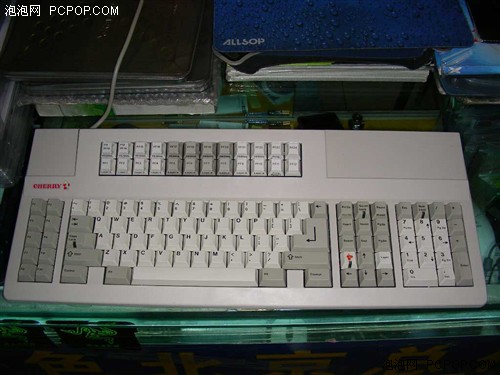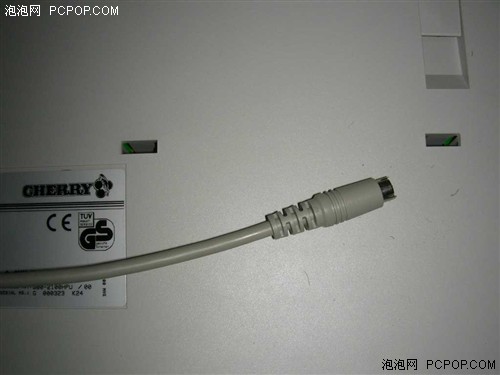Mass, looking at your photo, your keyboard has an ANSI layout instead of the BIGass Enter key layout on the one I'm looking at:

I'm assuming you modified it to be this way?
If you could tell us whether or not you had any issues getting keys to fit it would be great: I'm currently looking at a set of
engraved keys for it that are meant for a Filco/Ducky/DAS - I'm assuming I'll need a new spacebar and to find some windowed keys for the Cherry etc?
However, there is only one way to retrieve your programming or to program the keyboard using software: having the keyboard connected directly to a computer with a 5-pin DIN socket and running the dedicated Cherry software, which means having an OS not later than Windows 95.
So the only way to program it is through the DIN socket natively? But in the pic for the auction of this G80 it's only a PS/2 connection:

Also, for further confusion, this model has a 3 letter model code, but it is now known what P is:
Three-letter (old models)
Up to early 1996, it consisted of 3 letters:
XYZ
X: Type of keycap lettering.
H(igh-quality?) = two-shot injection molded (beige/grey keys)
S(tandard) = dye sublimation (white/grey keys)
L(asered)
Y: Variant, including switch type (G80) and cable.
A: Indicates MX black switches (linear), or browns (tactile reduced force) on ErgoPlus (G80-5xxx) boards (G81: ?)
E: Indicates MX clear switches (tactile)
F: Indicates MX blue switches (clicky + tactile)
B: ? - MX black switches (linear) (G81: ?)
C: ? - MX black switches (linear)
D: ? (G81)
G: MX black switches (linear), cable with reduced length of coiled section
P: Where is P?
Z: Keyboard layout.
D = German, F = French, U = US, B = Belgian, C = Swiss, V = Russian, ...
Reckon it would work if I tried to run the software through DOSBox or something?